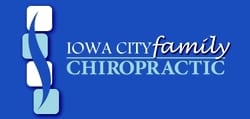The Whiplash Syndrome: Cervical Traction
Posted by Jason Cupp on Apr 20, 2012 in Whiplash | 0 commentsIowa City Chiropractor Talks about Whiplash and Chiropractic
Whiplash injuries include damage to the soft tissues of the neck such as muscles, tendons, ligaments, and myofascial tissues. The degree of injury is typically graded on a 1-3 scale from least to most tissue damaged, respectively. A grade 1 sprain (ligament injury) or strain (muscle or muscle tendon injury) includes minimal tissue disruption or tearing while grade 3 sprains and strains include significant tissue tearing and subsequently longer healing times with greater chance of long-term residual problems. More severe whiplash injuries can result in fracture but those types of injuries are not indicated for traction forms of therapy until after the fracture heals and stability is restored to the neck. So, the question is, what role does cervical traction play in the management of neck pain associated with whiplash?
In whiplash injuries, when it feels good to the patient to have someone pull on their neck, that person is a candidate for cervical traction. The amount of weight or traction force and length of time are based on patient comfort and are highly variable. Therefore, it is important to start with a low enough weight so injury to the patient from the traction therapy is avoided. Typically, 5#/15 minutes is a safe starting point, gradually increasing the weight to a maximum tolerated level.
Many insurance companies, based on the published literature regarding cervical traction, regard it as a “medically necessary” form of treatment and hence, a covered service. There are many different cervical traction devices available for home use of which the over-the-door traction unit is typically the least expensive and in some cases mandated prior to insurance allowance for a more expensive pneumatic cervical traction device. Unless there are reasons that over-the-door traction is not tolerated such as jaw pain (due to the chin strap pressure), this approach is commonly utilized. This device includes a water bag that is calibrated for water weight and can be done multiple times a day, depending on each case. There is also a collar-type of traction unit which allows the patient to move around rather than sit in one place. However, the amount of weight is better regulated with the water bag/sitting type. There are laying down types of neck traction which can also be regulated accurately for weight. These tend to be more expensive and insurance companies may require use of the less expensive over the door type first, unless there is a medical reason that a chin strap is not tolerated.
We realize you have a choice in where you choose your healthcare services. If you, a friend or family member requires care for whiplash, we sincerely appreciate the trust and confidence shown by choosing our services and look forward in serving you and your family presently and, in the future.
